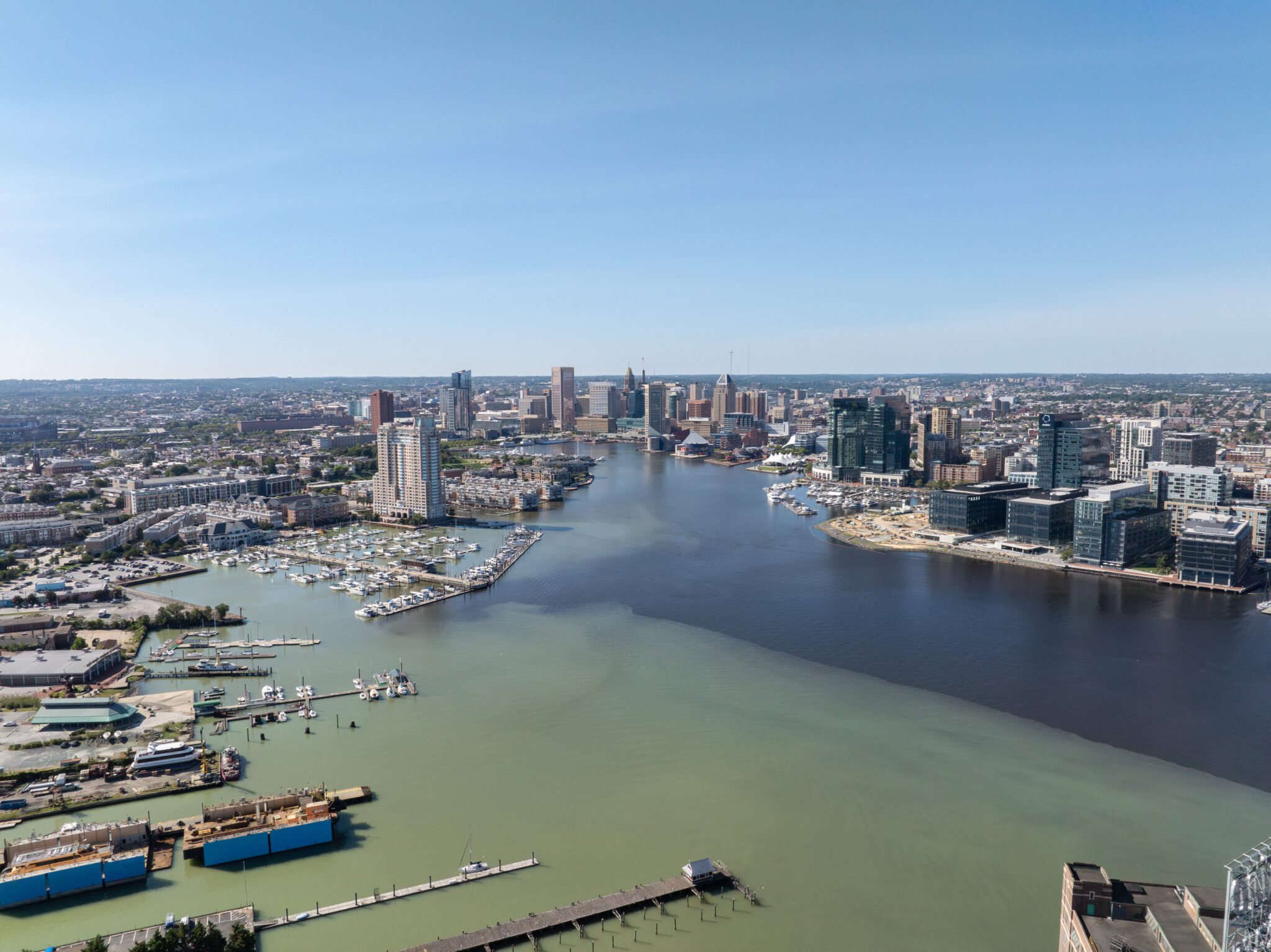Why are there so many dead fish in Baltimore Harbor?
Fish kill in Baltimore's Inner Harbor. September 23, 2025
Today was a heartbreaking day for people like me who love our city’s marine ecosystem and spend every day working toward its restoration. This week, Baltimore’s Inner Harbor experienced one of the worst fish kill events in recent memory. Thousands of Atlantic Menhaden perished. How did this happen? Why did it happen here? Was it a sewage spill? A harmful algal bloom? Was Mercury in retrograde? We've got the answers to all of this and more, so, read on.
So, what killed the fish?
The fish kill was caused by a lack of dissolved oxygen in the water. Fish get stressed when dissolved oxygen levels fall below 2 mg/L; this is known as a “dead zone.” We can look at how dissolved oxygen levels changed when a similar fish kill happened in 2024. On the night of September 3rd 2024, a monitoring station by the National Aquarium showed dissolved oxygen levels hit zero. That means there was no air in the water for fish to breathe.
What caused the dead zone?
Low dissolved oxygen is not typically an issue in the Harbor. It is consistently the best performing indicator in our annual Healthy Harbor report card. Last year, it scored 90 points out of 100. So, big drops like this are not the norm. The dead zone was caused by an event known as a thermal inversion. This also caused a pistachio tide, but more on that in a moment.
What is a thermal inversion?
Thermal inversions typically occur in stagnant bodies of water when the surface becomes colder than water on the bottom. Anyone who has ever swam in a lake or pond knows that the water by your feet is colder than the water by your head. After a summer of record-breaking heat, however, the Inner Harbor was warmed evenly, top to bottom. The surface temperature was 81 degrees and 20 feet down the water was still 81 degrees.
In the six days leading up to the inversion, the average air temperature dropped by 18 degrees. As this cold air cooled the water, it cooled the surface first. This created an unstable environment because colder water is denser (and heavier) than warmer water. The result is that the surface water sinks causing the water on the bottom to rises. As the water rises, naturally occurring bacteria living on the bottom of the harbor get carried to the surface too. These green sulfur bacteria are the real source of the problem.
What is a pistachio tide?
When green sulfur bacteria from the bottom of the harbor are exposed to sunlight, they multiply and turn a light shade of green. That is why we call it a pistachio tide.
A pistachio tide appears in the Inner Harbor on the morning of Sept. 3 2024. Photo courtesy the National Aquarium
Is a pistachio tide dangerous?
A pistachio tide is not toxic or dangerous to humans. It’s the depletion of oxygen that makes it dangerous to fish, crabs, eels, and other aquatic life that need dissolved oxygen to breathe.
Why was this fish kill so much larger than other years?
There’s not an immediately obvious answer to this question. It could be that weather conditions were more optimal this time. Record-breaking heat warmed the harbor so much that this week’s temperature drop may have had a greater impact than it would have during a milder summer. It could be that a separate ongoing algae bloom, which also removes oxygen from the water, happened to sync up with the pistachio tide. We do know it’s not because Mercury was in retrograde – that ended on August 27th.
Will this happen again?
The unfortunate truth is that pistachio tides are a fact of life in the Inner Harbor. They typically occur in the spring, as the weather warms up, and in the fall, as the weather cools down. A restored harbor and Chesapeake Bay would be more resilient to these sorts of events, making them less severe and reducing the likelihood of large fish kills. That’s why it’s so important to continue to work to reduce stormwater runoff, repair sewer pipes, and restore our marine ecosystem.
Further reading:
National Aquarium:
https://aqua.org/stories/2023-03-20-pistachio-tides-an-explainer





